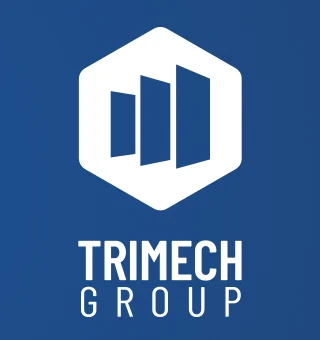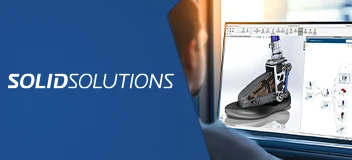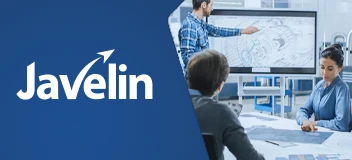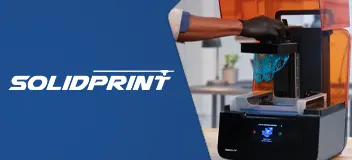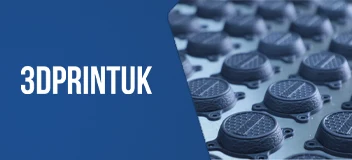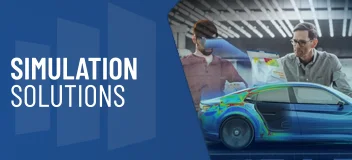SOLIDWORKS Visualize Overview
In the SOLIDWORKS Visualize Rendering course you will learn how to work with 3D CAD models to create unique photorealistic renderings for electronic and paper output.
The course is designed around a process or task based approach to training rather than focusing on individual features and functions. Case studies are used to illustrate processes, allowing you to learn the necessary commands and work flows to setup, manage and complete any rendering task.
This training course will help you to:
- Create renderings of your Part and Assembly documents
- Apply scenes and lighting
- Apply advanced visual effects
- Create and apply decals to your models
- Use cameras effectively
- Application of sun studies
- Advanced scenes & lighting
- Basic/Advanced Animation/Motion
Course Preview
Examples of images created with SOLIDWORKS Visualize Rendering
SOLIDWORKS Visualize Course Requirements & Benefits
Understand the course requirements and the skills you will acquire after completing the SOLIDWORKS Visualize Rendering course
"Learning about the capabilities of SOLIDWORKS Visualize Rendering should greatly improve the speed and quality of work that I will output"
— Daniel Miller, CleanRiver Recycling Solutions
"The instructor knows the product inside and out, he is close to the development team that he can almost solve problems in real-time."
— Chris Armour, Tigercat
— Gary Pasternak, LUR Studio
SOLIDWORKS Visualize Lessons
The following lessons are included in the course
Lesson 1: CAD to SOLIDWORKS Visualize Objectives
- Rendering from CAD
- Project Description
- Stages in the Process
- Importing to Visualize
- Open
- Visualize User Interface
- Toolbar
- Viewport
- Palette
- Heads Up Display
- Drop-downs
- Render Selection
- Easy Mode
- Appearances
- File Libraries
- Scenes
- Rendering
- Output Tools
- Summary
- Questions
- Exercise 1: Cooler
- Exercise 2: Sun Glasses
Lesson 2: Import Settings and Appearances
- Objectives
- Import Settings
- Appearances
- Project Description
- Stages in the Process
- Part Grouping
- Automatic
- Flatten
- Group/Appearance
- Layer
- Appearance
- Appearance/Layer
- Retain Structure
- Monitor File
- Snap to Floor
- Structure and Organization
- Selection Tools
- Object Manipulation
- Split
- SOLIDWORKS Visualize Add-In
- Copy and Paste
- Appearance Types
- Anisotropic
- Backscattering
- Emissive
- Flat
- Generic
- Glass
- Gem
- Matte
- Metal
- Metallic Paint
- Multi-Layer
- Paint
- Plastic
- Subsurface
- Thin Film
- Textures
- Bump
- Alpha
- Specular
- Colour
- Texture Mapping
- UV
- Box
- Planar
- Spherical
- Radial
- Cylindrical
- Perspective
- Appearance Type Parameters
- Merge Parts
- Summary
- Questions
- Exercise 3: SOLIDWORKS Add-In
- Exercise 4: Arbor Press
Lesson 3: Decals Objectives
- Decals
- Project Description
- Stages in the Process
- Decals
- Decal Depth
- Wrapping Decals
- Blend Texture Multi-Layer Decal Process
- Alpha Mapping
- Multi-Layer Appearance
- Summary
- Exercise 5: Pencil Sharpener
- Summary
- Exercise 6: Water Bottle
Lesson 4: Cameras
- Objectives
- Cameras
- Project Description
- Stages in the Process
- Cameras
- Aspect Ratio
- Keep Above Floor
- Grid Overlay
- Perspective
- Camera Orientation.
- Distance/Dolly
- Longitude
- Twist
- Position XYZ
- Camera Positioning
- Depth of Field
- Distance
- Aperture
- Filters
- Enable Post-Processing
- Apply to Geometry Only
- Bloom
- SOLIDWORKS Contents v Summary
- Questions
- Exercise 7: British Car
- Summary
- Exercise 8: Watch
Lesson 5: Backplates, Environments and Lights
- Objectives
- Project Description
- Stages in the Process.
- Environments
- HDR Environments
- Sunlight Environments
- Questions
- Lights
- Questions
- Exercise
- Summary
- Exercise 10: Water Bottle Backplate
Lesson 6: Productivity Tools
- Objectives
- Productivity Tools.
- Project Description
- Stages in the Process.
- Multiple Views
- Render All Cameras
- Time Limit Rendering
- Configurations
- Export
- Shared File Libraries.
- Render All Configurations
- Render Queue
- Visualize Boost
- Summary
- Questions
- Exercise 11: Ice Pick
- Summary
- Exercise 12: Guitar Colours
Lesson 7: Animations and Grouping
- Objectives
- Animations
- Project Description
- Stages in the Process
- Groups
- Animations
- Rotation Animation
- Animation Timeline and Controls
- Basic Animation Controls
- Advanced Animations Controls
- Animation Properties
- Animation List
- Timeline
- Animation Output
- Motion Blur
- Keyframe Animation
- Auto Keyframing
- Summary
- Questions
- Exercise 13: Cooler Animation
- Summary
- Exercise 14: Pencil Sharpener Explode
Lesson 8: Camera Animations
- Objectives
- Camera Animations
- Project Description
- Stages in the Process
- Camera Movement with the Triad
- Position Camera
- Position View
- Camera Animation
- Keyframe Properties
- Time Point
- Transition
- Tension
- Motion Ease
- Summary
- Questions
- Exercise 15: Guitar
- Summary
- Exercise 16: Pencil Sharpener Camera Animation
Lesson 9: Animating Appearances, Scenes
- Objectives
- Appearance and Scene Animations
- Project Description
- Stages in the Process
- Scene Animation
- Appearance Animations
- Summary
- Questions
- Exercise 17: Guitar Colour
- Summary
Lesson 10: Alternative Outputs
- Objectives
- Alternative Outputs
- Project Description
- Stages in the Process
- Turntable
- Viewport Turntables
- Output Tools Turntable
- Interactive Images
- Orbits
- Images per Orbit
- Start Angle
- End Angle
- Panorama View
- Sun Study
- 360 Camera
- Mono
- Stereo Two-Up
- Stereo Anaglyph
- Conclusion
- Questions
- Exercise 18: Computer Room
- Summary
Training Methods
Choose the training method right for you

Group/Public Training
Receive training as a group (limited amount per class) from certified instructors using vendor approved training content and methodologies.
Training is delivered either live online or in a traditional classroom environment.
Advantages
- Cost effective training method.
- More effective than video based training, with videos learners are often not as focused on the training and skip exercises.
- Learn more through group questions and feedback.

Private Training
This style of flexible training is perfect for teams or individuals who are faced with a specific challenge and require personalized courses with on-the-job coaching.
Training is available live online, in-person classroom or onsite at your location.
Advantages
- Use our state-of-the-art mobile classroom at your facility.
- Bring your team up to a consistent level of knowledge by having them take the same training at the same time.
- Benefit from flexible scheduling options.
Upcoming Training Courses
Choose a scheduled SOLIDWORKS Visualize course
Are you using SOLIDWORKS to its full potential?
Enhance your skills and capabilities with a SOLIDWORKS Training Assessment from TriMech.
